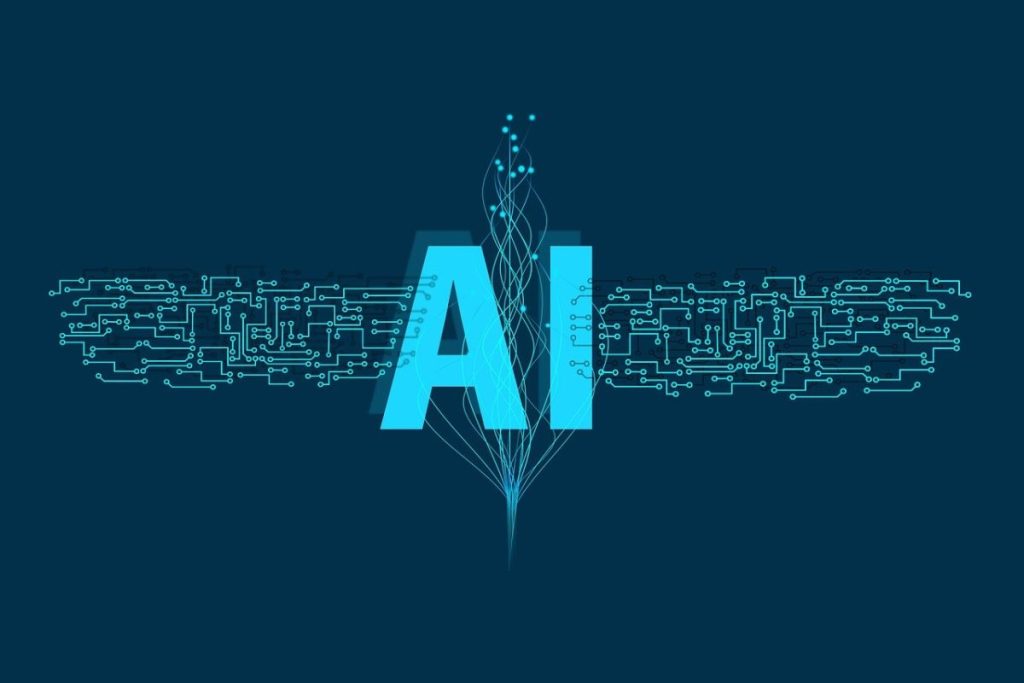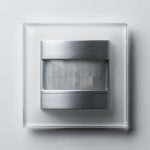How AI is Making IoT Devices Smarter and More Autonomous
The Internet of Things (IoT) has already changed the way we interact with technology, connecting everything from smart home devices to industrial sensors. But as IoT expands, its true potential is being unlocked by another technological revolution—Artificial Intelligence (AI). AI is making IoT devices smarter, more autonomous, and capable of handling vast amounts of data with minimal human intervention. Together, these technologies are paving the way for a future where smart systems optimize themselves, learn from their environment, and improve decision-making across industries.
But how exactly does AI enhance IoT, and what are the real-world implications? Let’s explore how AI is transforming the IoT landscape.
1. Turning Raw Data into Actionable Insights
IoT devices generate massive amounts of data. Whether it’s a smart thermostat tracking temperature changes, a wearable monitoring heart rate, or a factory sensor detecting machine vibrations, IoT is constantly collecting information. However, raw data by itself is not useful—it needs to be processed, analyzed, and turned into actionable insights.
This is where AI comes in. Using machine learning algorithms, AI can analyze patterns, detect anomalies, and predict outcomes based on historical data. Instead of just collecting and displaying information, AI-driven IoT devices can make smart decisions in real time.
Example:
A smart thermostat equipped with AI can learn your daily habits, adjusting the temperature automatically to optimize energy use without requiring manual input.
2. Enabling Predictive Maintenance
In industrial IoT (IIoT), AI is playing a crucial role in predictive maintenance. Traditional maintenance strategies involve either fixing machines when they break (reactive maintenance) or performing regular check-ups regardless of need (preventive maintenance). Both approaches can lead to unnecessary downtime and costs.
AI-powered IoT devices, on the other hand, can monitor machinery in real time and predict when a component is likely to fail. This allows companies to perform maintenance exactly when needed, reducing downtime and operational costs.
Example:
A manufacturing plant uses IoT sensors to monitor equipment vibrations and AI to detect unusual patterns. If a motor starts showing early signs of failure, the system can alert maintenance staff before a breakdown occurs.
3. Enhancing Automation and Autonomy
AI is making IoT devices more autonomous by reducing their dependence on human input. This is especially useful in areas where real-time decision-making is critical.
In smart homes, for example, AI-enabled IoT systems can adjust lighting, heating, and security based on user preferences and environmental factors. In self-driving cars, AI continuously processes data from multiple IoT sensors (cameras, radar, lidar) to navigate roads safely.
Example:
A smart irrigation system in agriculture can use AI to analyze weather data, soil moisture levels, and plant health. Instead of relying on a fixed watering schedule, the system can adjust irrigation dynamically, conserving water and optimizing crop growth.
4. Strengthening Security in IoT Networks
Security has always been a major concern in IoT, as connected devices can be vulnerable to cyberattacks. AI is now being used to improve IoT security by detecting and responding to threats in real time.
AI-driven cybersecurity systems can monitor network traffic, identify unusual behavior, and prevent potential breaches before they happen. Unlike traditional security measures, which rely on predefined rules, AI can adapt to evolving threats by learning from previous attack patterns.
Example:
A smart home security system equipped with AI can recognize authorized users through facial recognition while detecting and blocking unauthorized access attempts.
5. Improving AI-Powered Personal Assistants
Virtual assistants like Amazon Alexa, Google Assistant, and Apple’s Siri have become an integral part of smart homes. These AI-driven assistants use IoT to control connected devices, answer questions, and automate tasks.
As AI continues to evolve, these personal assistants are becoming more intuitive. Natural language processing (NLP) advancements allow them to understand and respond to human speech more effectively, while machine learning helps them adapt to user preferences over time.
Example:
A smart assistant can learn a user’s daily routine and proactively suggest adjustments. For instance, if it detects that you always dim the lights and play relaxing music in the evening, it can start doing this automatically.
6. AI at the Edge: Reducing Latency and Improving Efficiency
Traditional IoT systems send data to the cloud for processing, which can cause delays and require large amounts of bandwidth. AI-powered edge computing is changing this by processing data directly on IoT devices or nearby gateways instead of relying solely on cloud computing.
Edge AI allows devices to analyze and act on data locally, reducing latency and improving efficiency. This is especially important for applications that require real-time decision-making, such as autonomous vehicles, industrial robots, and healthcare monitoring.
Example:
In healthcare, wearable IoT devices can use edge AI to detect irregular heart rhythms and alert doctors immediately, without waiting for cloud processing.
7. Transforming Smart Cities
AI-powered IoT is playing a vital role in the development of smart cities. From traffic management and energy efficiency to public safety and waste management, AI-driven IoT systems are making urban environments more efficient and sustainable.
Example:
AI-enabled traffic sensors can analyze vehicle flow in real time and adjust traffic lights accordingly to reduce congestion. Similarly, smart grids can predict electricity demand and distribute power more efficiently.
Final Thoughts
The integration of AI and IoT is transforming the way we interact with technology, making devices smarter, more autonomous, and more efficient. From predictive maintenance in industries to intelligent home automation and advanced security systems, AI-driven IoT applications are reshaping every aspect of our lives.
As AI continues to evolve, its impact on IoT will only grow, opening the door to even more sophisticated innovations. Whether in healthcare, agriculture, manufacturing, or smart cities, AI-powered IoT is paving the way for a more intelligent and connected future.
If you’re looking to explore IoT projects, consider incorporating AI elements to enhance automation and decision-making. The future is not just about connected devices—it’s about intelligent devices that can think, learn, and act autonomously.
- Designing a Smarter Home in 2026: What People Get Wrong About Automation
 Smart homes were once science fiction, but today they’re a reality in millions of households. With voice assistants, smart plugs, and automated lighting systems, it’s easy to assume home automation is simply a matter of plugging in a few devices. Yet, many homeowners quickly discover that “smart” doesn’t always mean simple. In this article, we’ll…
Smart homes were once science fiction, but today they’re a reality in millions of households. With voice assistants, smart plugs, and automated lighting systems, it’s easy to assume home automation is simply a matter of plugging in a few devices. Yet, many homeowners quickly discover that “smart” doesn’t always mean simple. In this article, we’ll… - Automated Online Trading: How IoT is Redefining Financial Markets
 Introduction automated online trading In a world where milliseconds can decide millions, the fusion of Internet of Things (IoT) technology and automated online trading is reshaping global finance. What once relied solely on human judgment now increasingly depends on connected machines, real-time data, and predictive algorithms. From weather sensors influencing agricultural trades to smart logistics…
Introduction automated online trading In a world where milliseconds can decide millions, the fusion of Internet of Things (IoT) technology and automated online trading is reshaping global finance. What once relied solely on human judgment now increasingly depends on connected machines, real-time data, and predictive algorithms. From weather sensors influencing agricultural trades to smart logistics… - The Role of Linux in IoT: Powering the Connected World
 The Internet of Things (IoT) is everywhere—from smart homes and wearable devices to industrial automation and self-driving cars. Behind the scenes, one operating system plays a surprisingly dominant role: Linux. Known for its stability, flexibility, and open-source nature, Linux has become the backbone of countless IoT devices and platforms. But what makes Linux so well-suited…
The Internet of Things (IoT) is everywhere—from smart homes and wearable devices to industrial automation and self-driving cars. Behind the scenes, one operating system plays a surprisingly dominant role: Linux. Known for its stability, flexibility, and open-source nature, Linux has become the backbone of countless IoT devices and platforms. But what makes Linux so well-suited… - The Smart Home Revolution in 2025: How IoT is Transforming Everyday Living
 In the past decade, the vision of a truly smart home has moved from futuristic fantasy to everyday reality. As we step into 2025, the Internet of Things (IoT) has matured into a robust ecosystem, connecting appliances, security systems, lighting, and even entertainment devices under one seamless digital roof. The result? Homes that are safer,…
In the past decade, the vision of a truly smart home has moved from futuristic fantasy to everyday reality. As we step into 2025, the Internet of Things (IoT) has matured into a robust ecosystem, connecting appliances, security systems, lighting, and even entertainment devices under one seamless digital roof. The result? Homes that are safer,… - IoT and Data Privacy: How Safe Is Your Smart Home in 2025? – IoT Security
 The smart home revolution has made everyday life more convenient than ever. From voice assistants that control the lights to security cameras that send alerts directly to your phone, connected devices have become part of our daily routines. But with this convenience comes an important question: how safe is your personal data in a world…
The smart home revolution has made everyday life more convenient than ever. From voice assistants that control the lights to security cameras that send alerts directly to your phone, connected devices have become part of our daily routines. But with this convenience comes an important question: how safe is your personal data in a world…







